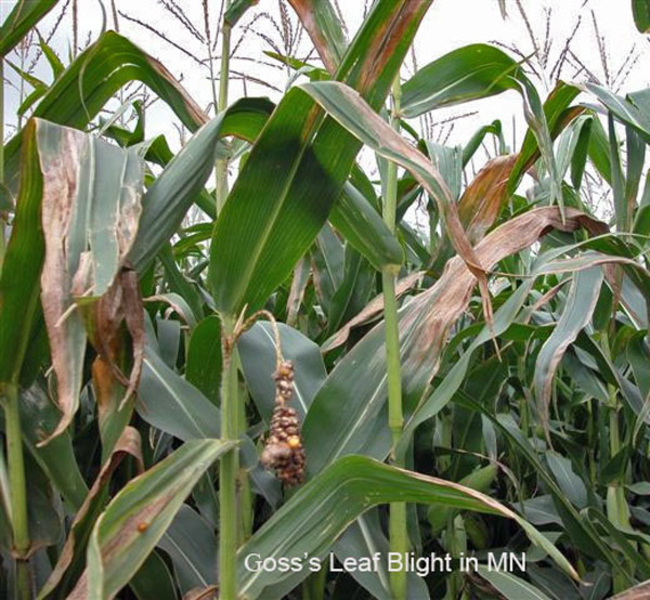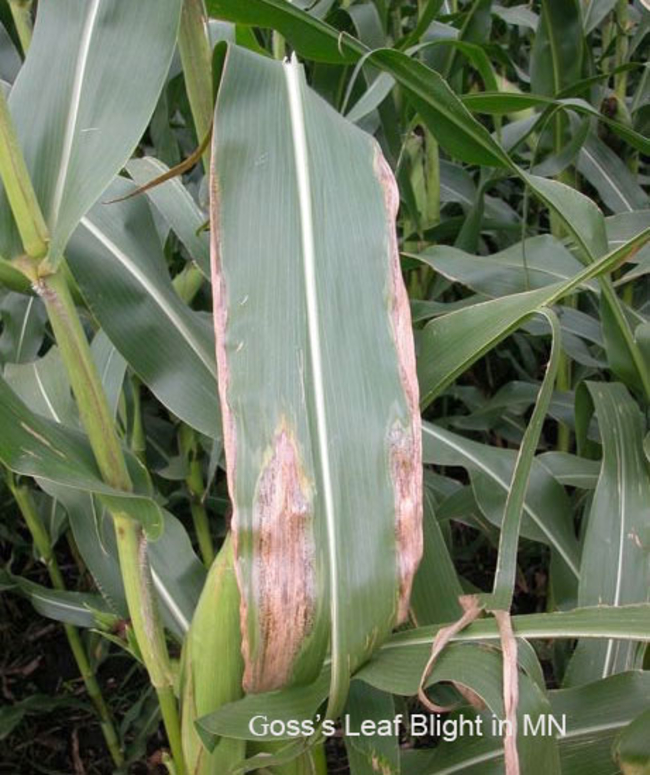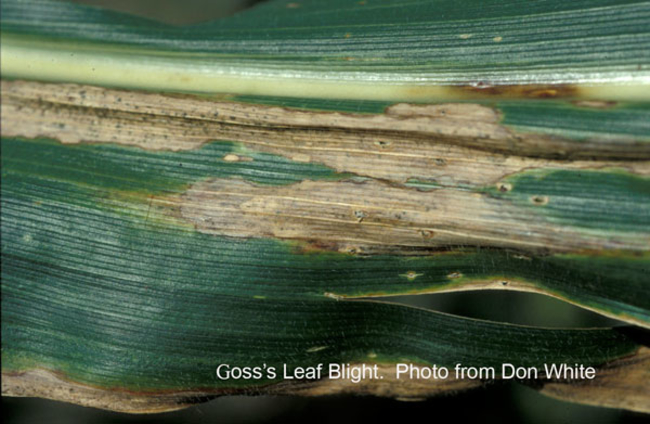This corn disease was first confirmed in Minnesota in 2009 and is now widespread in corn production areas of the state. It also occurs in the bordering states of North and South Dakota, Iowa, Wisconsin, and in Manitoba. Although it may have occurred earlier in some areas, it has been a spreading problem. Yield losses from Goss's wilt and blight can exceed 30 percent for susceptible hybrids.
Conditions and timing that favor this disease
Goss’s wilt primarily infects leaves that have been wounded, such as by hail, sand-blasting, rain, wind, and strong storms. The disease spreads in the plant following leaf infection, and can spread from plant to plant. Disease development is favored by warm (greater than 80 degrees F) conditions. Symptoms often become most visible and increase in severity after silking. The disease is favored by planting susceptible hybrids, reduced tillage, and planting corn-on-corn.
Causal pathogen
Goss’s wilt is caused by the bacterial pathogen named Clavibacter michiganensis subspecies nebraskensis. It overwinters in infested corn debris near the soil surface. The pathogen can possibly be seed transmitted at very low levels. Grain sorghum and some grasses such as sudan, several foxtail species, shattercane, and eastern gamagrass are also susceptible to this pathogen.
Symptoms and diagnosis of Goss’s wilt
The primary symptoms on leaves are elongated tan lesions with irregular margins extending parallel to the veins. Large sections of leaf area can be affected. Dark, water-soaked spots (‘freckles’) develop in the lesions. Shiny patches of dried bacterial ooze that appear similar to dry varnish are often present on the lesions. In plants with stalk infection, orange vascular bundles may be seen in the stalk. The seedling blight phase of this disease may cause wilting and death of seedlings, but is not common in Minnesota. Confirmatory diagnosis is based on the presence of characteristic symptoms and signs on leaves, bacterial streaming from lesions seen with a microscope, and confirmation of the presence of the bacterial pathogen.
Management of Goss’s wilt
This disease can be managed by using resistant hybrids, rotating away from corn production, using tillage that buries corn residue after harvest, and by controlling grassy weeds.
Reviewed in 2018




